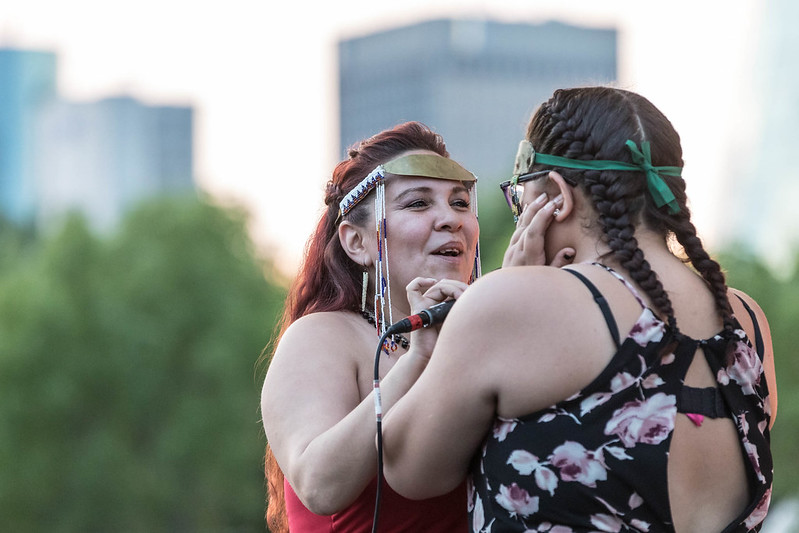Poverty among Canada’s Indigenous Population
 Despite being one of the wealthiest and most productive countries in the world, Canada does not provide equally for all of its citizens. Specifically, Canada’s Indigenous population constitutes 4% of the nation’s population of about 34.7 million. Despite their name of “First Peoples,” Indigenous people in Canada receive less priority for public aid and infrastructure. Canada’s Indigenous population disproportionately lives in poverty. For example, 25% of First Nations, Métis and Inuit people live in poverty. Out of the population of First Peoples’ children, 40% live below the poverty line as well.
Despite being one of the wealthiest and most productive countries in the world, Canada does not provide equally for all of its citizens. Specifically, Canada’s Indigenous population constitutes 4% of the nation’s population of about 34.7 million. Despite their name of “First Peoples,” Indigenous people in Canada receive less priority for public aid and infrastructure. Canada’s Indigenous population disproportionately lives in poverty. For example, 25% of First Nations, Métis and Inuit people live in poverty. Out of the population of First Peoples’ children, 40% live below the poverty line as well.
The Housing Crisis
Many indigenous residences are overcrowded, often in poor and unsafe conditions. Overall, 20% of Canada’s Indigenous population lives in overcrowded households, both on and off reserves. Additionally, 25% of First Nations people live in housing that is substandard. Among Canada’s homeless population, 22% are First Nations.
While high rates of poverty among First Nations people are one major contributor to the housing crisis, the limited number of homes available to them is another large problem. Estimates suggest that Canada’s Indigenous population living on reserves needs anywhere from 130,000 to 175,000 new homes. It is even more difficult to gauge the number of housing units needed to accommodate the off-reservation First Nations population. Information for off-reservation housing extends to other Indigenous populations like the Métis and Inuit.
Food Deserts
Approximately 48% of First Nation households struggle to meet their daily food needs. This rate is higher in Canada’s Alberta province, where 60% of First Nations people find it difficult to feed their families. Both of these numbers are much higher among Canada’s Indigenous population compared to the national rate of 8.4%.
Within Canada’s Indigenous population, food insecurity continues to climb. This is especially true in remote areas with little to no access to a service center. When available, these centers help the Indigenous population with food, water, housing, health and education services.
While getting food is a struggle in itself, not all meals are equally nutritious. First Nations people have an even harder time getting healthy foods due to high demand, few centers and high prices. Traditional foods, like game and fish, are also hard to come by due to pollution and industry in Canada. However, these traditional foods generally lack the preservatives and artificial sugars found in much other food. As a result, many Indigenous adults suffer dietary issues. About 82% are overweight, while 20% suffer from diabetes. Again, these rates are disproportionately high among Canada’s Indigenous population relative to the overall population.
Education and Employment
Education remains one of the most effective ways for members of impoverished communities to lift themselves out of poverty. However, under a system that treats the Indigenous population like second-class citizens, quality education is scarce. This makes it more difficult for Canada’s indigenous population to improve their quality of life.
Less than 50% of First Peoples have a high school diploma. Further, just 6% have any kind of college degree. Canada has a history of investing fewer resources into Indigenous education than in its public education. Specifically, the disparity may be as severe as investing $8,000 less per Indigenous student than per Canadian student.
This disparity between First Peoples and Canada’s population continues to affect employment trends. Unemployment rates among the Inuit, Métis and First Nations are more than double Canada’s rate. In some areas, 80% of the Indigenous population relies on welfare. Reducing the educational gap (and consequently, the employment gap) would infuse an additional $36 billion into Canada’s economy by 2026.
Employment and education disparities also exist between on-reserve and off-reserve Indigenous people. As of 2007, the high school graduation rate was up to 70% for off-reserve First Peoples. By contrast, on-reserve rates rest at about 45%. Among the Inuit population, the high school graduation rate has decreased, falling from 52% to 41%.
The Gord Downie and Chanie Wenjack Fund
In a country that’s thriving, it can be hard to believe that there are populations so deprived of resources and opportunities. The Gord Downie and Chanie Wenjack Fund (DWF) strives to build people’s awareness about the marginalization of First Peoples. It also seeks to mend the relationship between Canada and its Indigenous population through teaching their history and culture.
The donations the DWF receives go to the creation of legacy schools and spaces. For example, its Legacy School program is a partnership between the DWF and certain schools. These legacy schools educate students on the history and culture of First Peoples. The Legacy Spaces program is a similar program that partners with organizations and corporations who are passionate about mending the divide between Canada’s non-Indigenous and Indigenous populations.
In focusing on building mutual understanding, the DWF seeks a more supportive relationship between Canada’s two populations. This would serve to preserve the culture of the First Peoples. Importantly, it would also help the Canadian government to finally recognize its duty to its most marginalized population.
– Catherine Lin
Photo: Flickr
